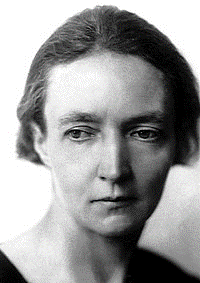She was preceded by pre-17th century alchemists, including Marie le Jars de Gournay (1565-1645) and Marie Meurdrac (1610-1680). By the Englishwoman Katherine Boyle Lady Ranelagh (1615-1691), the chemist Marie Anne Paulze (1758-1836), known as Mme. Lavoisier in France, the chemist Julia Lermontova (1847-1919), pioneer of the periodic table in Rusia.
Some contemporaries are the English pioneers in chemistry Ida Freund (1863-1914) and Kathleen Culhane Lathbury (1900-1993) and the Austrian Rose Stern (1891-1962). Also, Stefanie Horovitz (1877-1942), a Polish Jewish chemist known for her experimental work demonstrating the existence of isotopes, Norwegian radiochemist Ellen Gleditsch (1879-1968), nuclear chemists Ada Florence Remfry Hitchins (1891-1972), British, Elizabeth Rona (1890-1981), of Hungarian origin, known for her work with radioactive isotopes and polonium separation methods, Harriet Brooks (1876-1933), Canadian nuclear physicist and expert in nuclear transmutations.
Irène is part of the genealogy of women scientists who trace their origins to her mother Marie-Sklodowska Curie (1867-1934) and who participated in the origin of nuclear science. Some chemists in this genealogy are: Marguerite Perey (1909-1975), French chemist and physicist assistant and close collaborator of Marie Curie, who discovered francium; Ida Noddack (1896-1978), German chemical engineer who discovered rhenium with her husband in 1925, and the first person who proposed the idea the nuclear fission; and Lise Meitner (1878-1968), Austrian physicist and co-discoverer of the element protactinium and nuclear fission.
In the field of radioactivity, at the beginning of the 20th century, the presence of women scientists was notorious. A large number of them worked at the Institut du Radium in Paris or at the Institute for Radium Research in Vienna.
In addition to the aforementioned Marguerite Perey, up tu 45 women worked at the Institut du Radium in Paris: French women, such as Irène herself, Lucie Blanquies, who published 2 articles in Le Radium in 1909, and Éliane Montel (1898-1993); the Russian-Ukrainian Catherine Chamié (1888-1950); the Polish Sonia Slobodkine Cotelle (1896-1945); the Canadian Harriet Brooks (1876-1933); the Norwegian Ellen Gleditsch (1879-1968); the Swedish Eva Ramstdet (1879-1974); the British Mary Sybil Leslie (1887-1937) and the Polish Jadwiga Szmidt (1889-1940). At the Institute for Radium Research in Vienna between 1914 and 1934, more than a third were women: the Austrian physicists Marietta Blau (1894-1970) and Stefanie Horovitz (1887-1942); the Hungarian Elizabeth Rona (1890-1981) and the Bulgarian Elizabeth Kara-Michailova (1897-1968). In addition, special mention should be made of the young women researchers who worked at the beginning of the 20th century in nuclear science in different research institutes, such as those already mentioned in Vienna and Paris, and, in Montreal, at McGill University with Ernest Rutherford; the American Fanny Cook Gates (1872-1931) and the Canadian Harriet Brooks (1876-1933), who also worked at the Cavendish Laboratory in Cambridge with J. J. Thomson, where the Englishwoman Jesse M. W. Slater (1879-1966) did research. J. Thomson, where the Englishwoman Jesse M. W. Slater (1879-1961) and, at the Universities of Chicago and Cambridge, the Canadian Elisabeth R. Laird (1874-1969) did research. These works were complemented by other contributions: Berta Karlik (1904-1990), in Austria, who discovered isotopes of astatine in 1941; Maria Göppert-Mayer (1906-1972), German physicist and Nobel Prize in Physics in 1963 for the layered model of the atomic nucleus; and Chien-Shiung Wu (1912-1997), Chinese-born American physicist, who experimentally proved the hypothesis on the violation of parity by weak nuclear interactions.
Irène was also a contemporary of Rosalind Elsie Franklin (1920-1958), British chemist and crystallographer whose work was fundamental to understanding the molecular structures of DNA, RNA, viruses, carbon and graphite; English engineer, mathematician and physicist Hertha Ayrton (1854-1923); and mathematicians Emmy Noether (1882-1935) and Hilda Geiringer (1893-1973).
